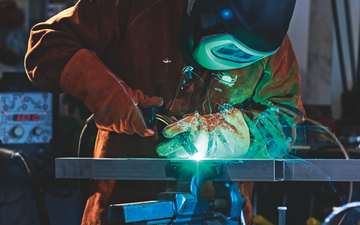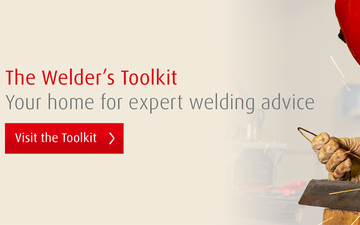- Official BOC UK Online | Industrial Gases | Products & Solutions | BOConline UK
-
Shop
- Industries
- Processes
- Gases & Equipment
-
Solutions
-
Services
-
Health & Safety
-
Contact & Support
- What's Happening
-
Net Zero Strategies
Picking the Perfect PPE for Safe Welding Work
Posted by BOC

It goes without saying that safety is a vital aspect of all welding-related activity. So, how can you ensure you have the right kit to do the job without leaving yourself at risk?
If your workspace seems fully prepared for welding to commence safely, take a step back and consider your personal safety.
As the HSE states, failing to have the right Personal Protective Equipment (PPE) in place could leave yourself and others at risk, and you could be affected by the following health issues if you’re not properly protected:
- Occupational lung disease, including lung cancer
- Skin burns, irritation and other conditions caused by heat, sparks and welding radiation
- Optical issues such as ‘arc eye’, caused by welding radiation
What types of welding PPE are available?
An extensive range of PPE is on the market. Taken together, they should give you comprehensive coverage from head to toe. Here’s an overview of the types of equipment that are available for you to consider:
Flame retardant head protection - It’s important that no skin is exposed to the harmful radiation that is emitted when you’re arc welding. Flame retardant head protection should be worn under your helmet.
These garments range from simple flame retardant caps to fully adjustable welding hoods so that your whole head and neck are protected from radiation, heat, spatter and sparks while you weld. They are usually made from common materials including cotton and Velcro, but are also treated with flame-resistant coating.
Boots - These should have reinforced steel toe caps as a minimum. You’ll want to weld in comfort, of course; some of the better welders’ boots have extra cushioning while still being fire retardant.
But the main feature of welding boots should be the level of protection they offer you. This includes heat and spark resistance, material that is oil and water repellent, and often anti-static and anti-shock, whilst offering good protection against falling or stationary objects that could cause injury. All footwear should be tested to the EN ISO 20345 safety standard - ask your local Gas & Gear store for more information.
Overalls and gloves - An array of welding apparel is available. Selection requires some thought about the welding task at hand so that the PPE you pick matches your needs. Fire retardancy is critical in all cases. For your overalls, this means making sure they’re the right fit and are made from approved flame-retardant material.
Welding gloves should be leather instead of cotton, fit snugly with room for movement and be suitable for your particular application. You can also choose welding sleeves or jackets to give your arms extra protection and a welding apron, which covers your torso and upper legs.
Welding helmet: Your welding helmet is a critical piece of kit and it’s worth investing to get the best possible protection. The level of protection required for your regular welding activity will determine the type of helmet you need (and therefore the cost). For example, when welding fumes present an issue, a helmet with a Powered Air Purifying Respirator (PAPR) system will be required.
Whatever helmet you choose to invest in, it should be approved to EN175 and E379 standards and should fit comfortably. The better helmets allow you to adjust the darkness of the lens to suit the welding process you are engaged in.
You can read much more about choosing the right welding helmet in our blog.
Think safety first at all times
The fact is, you can never be too careful when it comes to selecting welding safety equipment. Even if you have the right PPE in place there are additional items to consider that will prove a crucial component in staying safe while you weld.
You can read more about this in our blog 'How to assemble your welding kit'.
If you need any further advice on choosing welding PPE, please don’t hesitate to drop into your local Gas & Gear store or chat to us online. You can also visit BOC’s online shop to find the full range of PPE that we offer.
* BOC accepts no liability for the incorrect choice of RPE and LEV. A correct risk assessment should be carried out to ensure suitable products are selected for the environment and user. Details regarding performance and limitations of products are set out on the packaging and/or user instructions.

